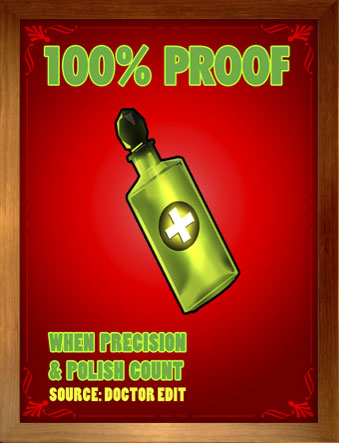Doctor Edit’s proofreading services eliminate surface errors and mistakes in grammar, punctuation, spelling, and formatting. With decades of experience as a proofreader, I can ensure your writing is as polished as possible.
Compared with editing, proofreading can be easily defined as the final check of a written text before it’s published or submitted.
While proofreading may be the last major stage of the editing process, this doesn’t mean it’s the least important.
What types of documents can benefit from proofreading?
The short answer is all types, but especially:
- Academic papers and theses
- Business reports and proposals
- Emails and newsletters
- Website content
- Résumés and cover letters
- Books and manuscripts
- Marketing materials and ads
Everyone benefits from having another pair of eyes look over their work, and they will always pick up something the author has missed. Depending on the nature of the document in question, the consequences of errors going unchecked can be far-reaching.
Spelling a word incorrectly or forgetting an apostrophe, for example, can completely alter the meaning of a sentence. You might have intended to say one thing, but what you’ve written is saying another.
What Doctor Edit’s proofreading services include
Here’s how Doctor Edit’s proofreading services will give you more confidence when it comes to sharing your writing. I’ll check for:
- Spelling mistakes and typos
- Grammatical errors (e.g., subject-verb agreement)
- Incorrect punctuation
- Inconsistent formatting (font, headings, spacing)
- Repeated or missing words
- Misuse of homophones (e.g., their/there/they’re)
- Consistency in style and tone
- Any silly mistakes that could make you look bad in the eyes of others
Is your spell-checker really your friend?
Word processors offer a range of writing tools these days, but it’s important to remember that every spell-checker has its limitations.
A spell-checker might seem like your best friend when it picks up your minor typos, but it’s what it doesn’t detect that will make you think twice about trusting it completely.
Only careful proofreading will pick up the issues commonly overlooked by spell-checkers, such as those related to homonyms, proper nouns, and context-dependent errors. They’ve also been known to flag correct words as incorrect!
Human proofreaders use judgement and language expertise to catch subtle errors that automated tools can’t, ensuring accuracy and readability.
Editing vs proofreading services: What’s the difference?
Knowing the difference between editing and proofreading will give you important insight into your own writing process.
Both editing and proofreading services operate at the sentence level, but they concentrate on different aspects of the text and employ different techniques:
- When I edit, I evaluate aspects of your writing such as language use, expression, overall structure, and coherence.
- When I proofread, I focus on eliminating surface errors and mistakes in grammar, punctuation, spelling, and formatting.
Style guides and style sheets: The keys to superior proofreading
A style guide is a published set of standards that outlines the preferred usage of grammar, punctuation, formatting and citation styles.
Before I begin proofreading, I’ll ask you which style guide (if any) your document needs to follow. I can then align the document with the academic conventions expected by a specific university, industry, publisher or organisation as I proofread.
I’ll use the style guide to:
- Clarify rules on punctuation (e.g., Oxford comma)
- Confirm how to format headings, numbers, or references
- Ensure consistency with language choice (e.g., US vs UK English)
- Resolve grammatical uncertainties
A style sheet is a customised, bespoke document that I create for every proofreading or editing project. It records decisions that may not be covered by the style guide or intentionally deviate from it for stylistic or branding reasons.
Style sheets typically document:
- Spelling preferences (e.g., ‘email’ vs ‘e-mail’).
- Capitalisation choices (e.g., ‘Internet’ vs ‘internet’)
- Hyphenation (e.g., ‘decision-making’ vs ‘decision making’)
- Character names or specialised terms
- Exceptions to the main style guide
- Referencing style (for academic texts, reports, etc.)
I’ll use the style sheet to:
- Track choices made during editing to ensure internal consistency
- Communicate with you about specific editorial decisions
- Handle exceptions not covered in the broader style guide
Frequently asked questions
1. Do I need a proofreader even if I’m a good writer?
Yes. Even the best writers benefit from a fresh pair of eyes. When you’re close to your own writing, it’s easy to overlook mistakes. A professional proofreader offers objectivity and catches issues you might miss.
2. How long do your proofreading services take?
It depends on the length and complexity of the document. A short email may take a few minutes, while a novel or academic thesis could take several days. I usually estimate turnaround times based on word count and urgency.
3. Can proofreading improve my grades or job prospects?
Absolutely. In academic settings, work polished by a proofreader demonstrates attention to detail and can lead to better grades. In professional settings, error-free writing reflects competence, increasing your chances of landing a job or securing a client.
4. Should I proofread my work before sending it to Doctor Edit?
Yes! Doing a self-review first makes my job easier and may lower the cost if your corrections mean I can spend less time on the job. Plus, you’ll learn from your mistakes and improve your writing.
6. Are proofreading services only for long-form content?
Not at all. Even short content – like social media posts, email subject lines, and product descriptions – benefits from careful proofreading. Small mistakes can have a big impact, especially in public or professional-facing writing.

